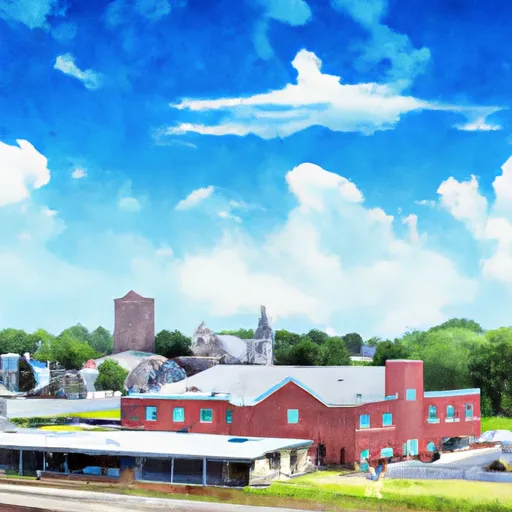-
 Snoflo Premium
Snoflo Premium
Get unlimited access to all our content
With no Ad interruptions! - Start Your Free Trial Login with existing account
Erskine
Eden Index
Climate
4.9
•
Recreation
3.5
•
Community
•
Safeguard
3.2/10

Erskine, Minnesota is a small town located in the northwestern part of the state. The area experiences a continental climate with cold winters and warm summers. The town is situated near the Clearwater River and several other smaller streams, which contribute to the region's hydrology. These waterways support a variety of fish species, including walleye and northern pike, making it a popular destination for fishing enthusiasts. Outdoor recreation opportunities in Erskine include hunting, hiking, biking, and camping. The nearby Tamarac National Wildlife Refuge offers additional opportunities for wildlife viewing and bird watching. Overall, Erskine is a great destination for those seeking outdoor activities in a beautiful natural setting.
What is the Eden Index?
The Snoflo Eden Index serves as a comprehensive rating system for regions, evaluating their desirability through a holistic assessment of climate health, outdoor recreation opportunities, and natural disaster risk, acknowledging the profound impact of these factors on livability and well-being.
Climate Health Indicator (CHI): 4.9
Erskine receives approximately
601mm of rain per year,
with humidity levels near 83%
and air temperatures averaging around
5°C.
Erskine has a plant hardyness factor of
3, meaning
plants and agriculture in this region thrive during a short period during spring and early summer. Most
plants will die off during the colder winter months.
By considering the ideal temperature range, reliable water supplies, clean air, and stable seasonal rain or snowpacks, the Climate Health Indicator (CHI) underscores the significance of a healthy climate as the foundation for quality living.
A healthy climate is paramount for ensuring a high quality of life and livability in a region, fostering both physical well-being and environmental harmony. This can be characterized by ideal temperatures, reliable access to water supplies, clean air, and consistent seasonal rain or snowpacks.
Weather Forecast
Streamflow Conditions
Lower Red
Area Rivers
Lower Red
Snowpack Depths
Lower Red
Reservoir Storage Capacity
Lower Red
Groundwater Levels
Recreational Opportunity Index (ROI): 3.5
The Recreational Opportunity Index (ROI) recognizes the value of outdoor recreational options, such as parks, hiking trails, camping sites, and fishing spots, while acknowledging that climate plays a pivotal role in ensuring the comfort and consistency of these experiences.
Access to outdoor recreational opportunities, encompassing activities such as parks, hiking, camping, and fishing, is crucial for overall well-being, and the climate plays a pivotal role in enabling and enhancing these experiences, ensuring that individuals can engage in nature-based activities comfortably and consistently.
Camping Areas
| Campground | Campsites | Reservations | Toilets | Showers | Elevation |
|---|---|---|---|---|---|
| Delagoon Rec Area | 36 | 1,222 ft | |||
| Middle River Park | 12 | 1,140 ft | |||
| Maplewood State Park | 70 | 1,418 ft | |||
| Sherin Memorial City Campground | None | 1,325 ft | |||
| Strathcona City Park | None | 1,136 ft | |||
| Durgin Memorial Park | None | 1,069 ft | |||
| American Legion Park - Detroit Lakes | 100 | 1,342 ft | |||
| Tipsinah Mounds City Park | 75 | 1,170 ft | |||
| Legion Park | 15 | 1,070 ft |
Nearby Fishing
Catastrophe Safeguard Index (CSI):
The Catastrophe Safeguard Index (CSI) recognizes that natural disaster risk, encompassing floods, fires, hurricanes, and tornadoes, can drastically affect safety and the overall appeal of an area.
The level of natural disaster risk in a region significantly affects safety and the overall livability, with climate change amplifying these risks by potentially increasing the frequency and intensity of events like floods, fires, hurricanes, and tornadoes, thereby posing substantial challenges to community resilience and well-being.
Community Resilience Indicator (CRI):
The Community Resilience Indicator (CRI) recognizes that education, healthcare, and socioeconomics are crucial to the well-being of a region. The CRI acknowledges the profound impact of these elements on residents' overall quality of life. By evaluating educational resources, healthcare accessibility, and economic inclusivity, the index captures the essential aspects that contribute to a thriving community, fostering resident satisfaction, equity, and social cohesion.

